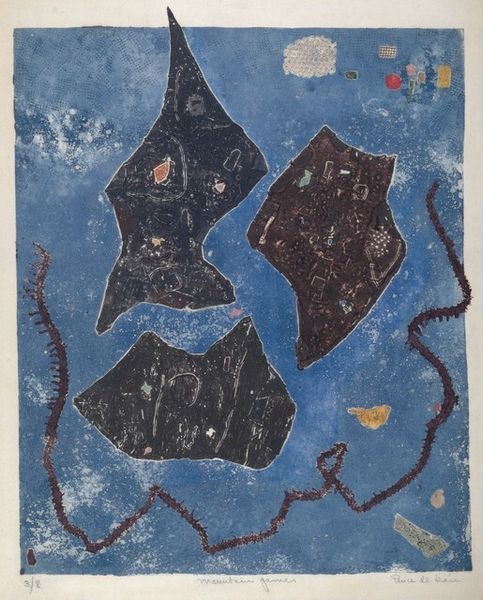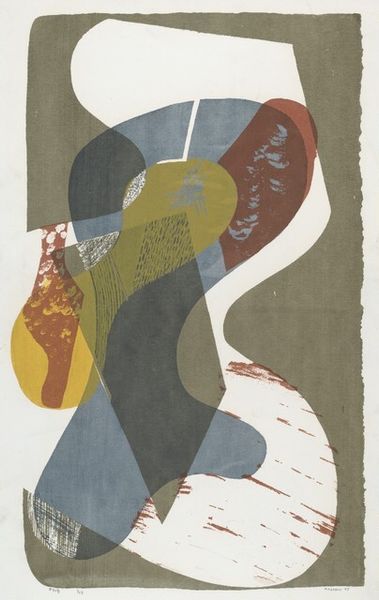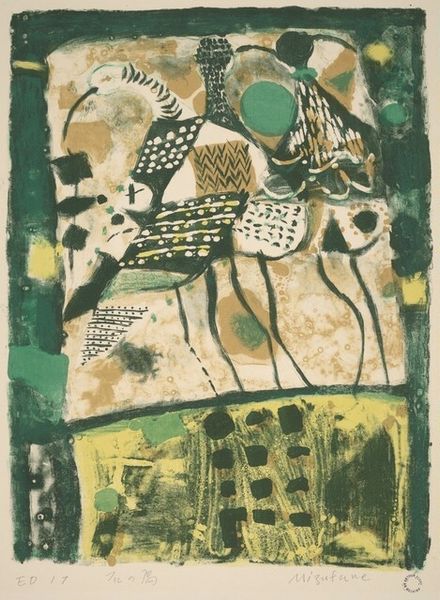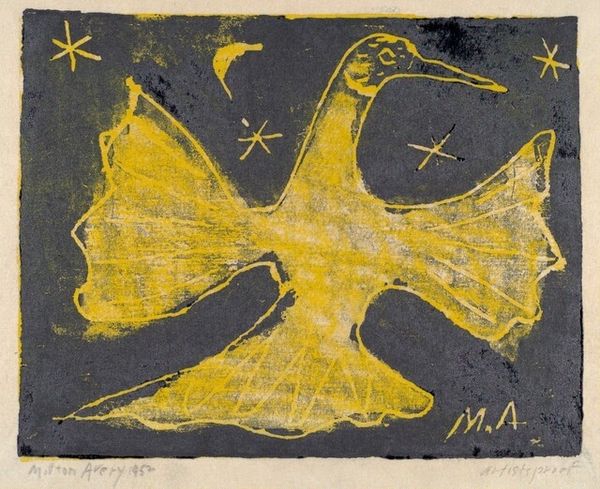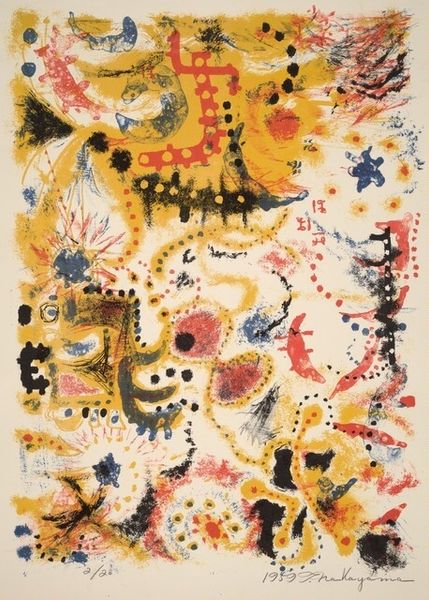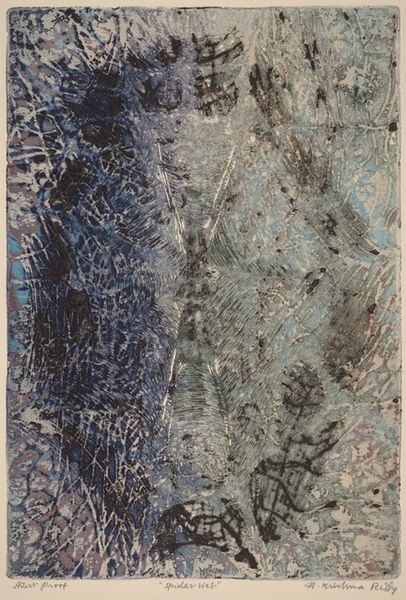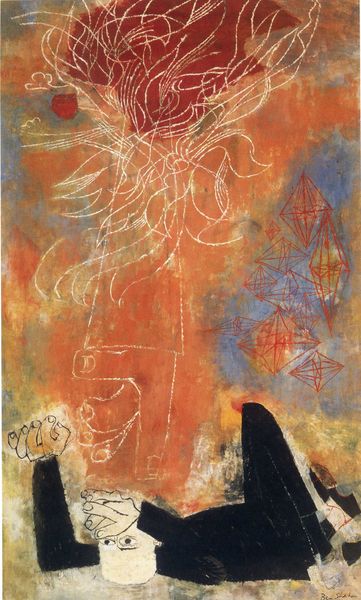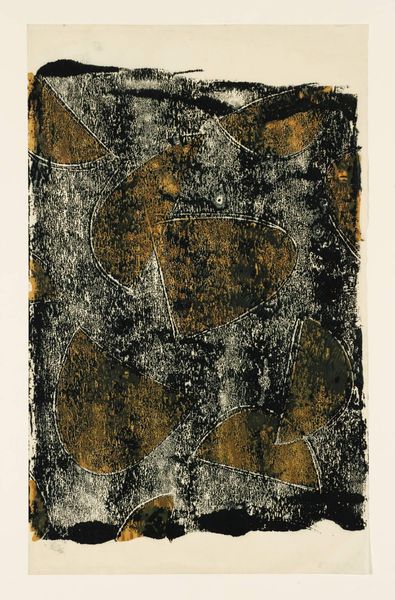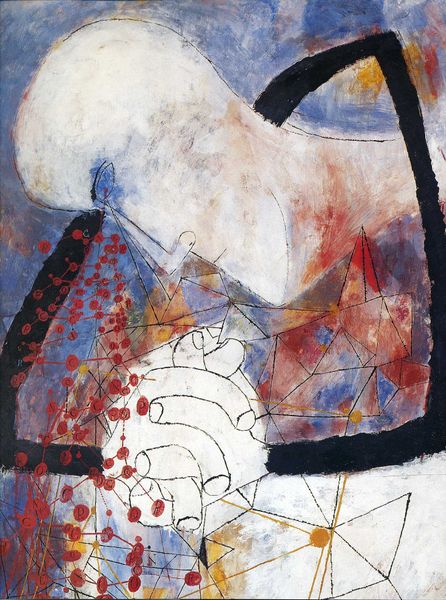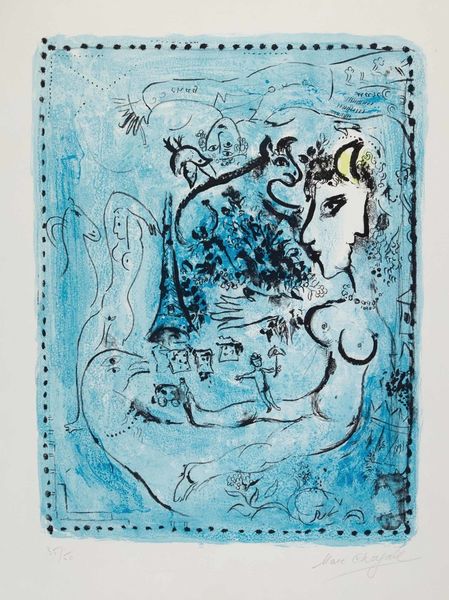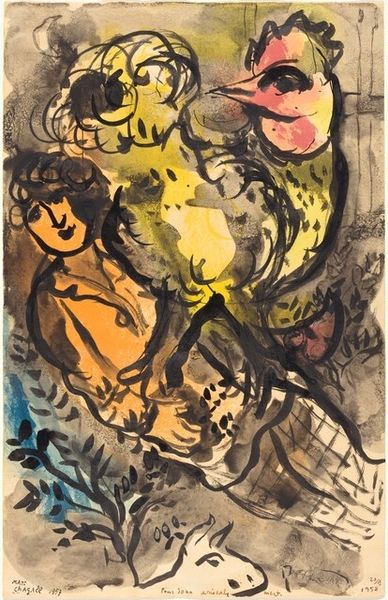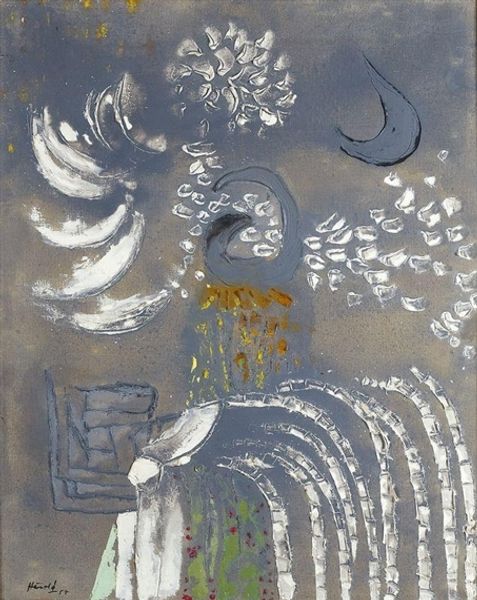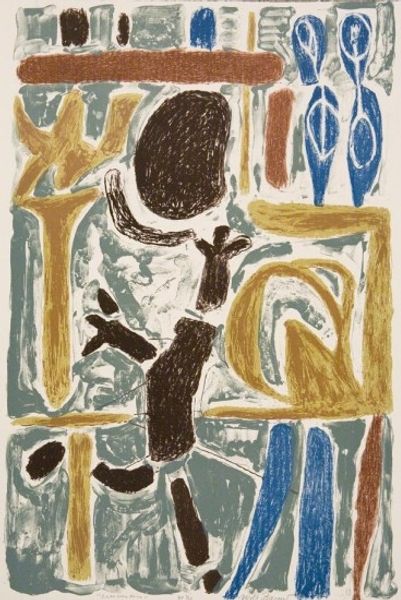
Dimensions: plate: 53 x 38.9 cm (20 7/8 x 15 5/16 in.) sheet: 64.8 x 49.5 cm (25 1/2 x 19 1/2 in.)
Copyright: National Gallery of Art: CC0 1.0
Editor: We're looking at "Noblewoman" by Rolf Nesch, created in 1964 using mixed media. It's a pretty striking portrait, almost unsettling with its abstract features and collage-like textures. How do you interpret this work in its historical context? Curator: It's interesting you find it unsettling. Nesch created this piece in a period marked by post-war reflection and a questioning of traditional social structures. Looking at it from that lens, one could see this "Noblewoman" not as a celebration, but rather a critical commentary on the concept of nobility. Do you notice how the rigid, almost mask-like, features contrast with the fragmented background? Editor: Yes, the background almost feels like crumbling architecture or society. And her expression... she seems trapped, almost bird-like. Curator: Exactly. Nesch's use of mixed media further emphasizes this sense of unease and breakdown. Printmaking, with its inherent ability to mass produce, here subverts the notion of a unique and elevated class. The “noblewoman” becomes one of many, trapped within her social role. How does the title, "Die Vornehme", translate and does that add to your understanding? Editor: It translates to “The Distinguished Woman” or “The Noblewoman,” which creates an interesting tension. She's titled as noble, but the image suggests something different. The art is shown as "proof" so the masses can engage it in some way. It seems like it might be intended for the everyman as some sort of moral statement. Curator: Precisely. The print questions the very definition of distinction. The title becomes ironic, almost a social critique aimed toward societal elites. By displaying his art in a gallery the image moves toward some kind of democratizing aspect and encourages broader viewership for this work and, thus, to consider broader themes. What do you make of the way Expressionism shapes the visual messaging of the art? Editor: So, he is perhaps inviting us to challenge established power structures and consider the weight of those roles. This really shifts how I initially viewed it; there's much more depth than just an abstract portrait. Curator: Absolutely. This work speaks volumes about the sociopolitical landscape of the mid-20th century, encouraging us to look beyond the surface of established ideals and values, especially through museums and broader art engagements. Editor: I am glad to reconsider it by exploring historical context, thank you.
Comments
No comments
Be the first to comment and join the conversation on the ultimate creative platform.
